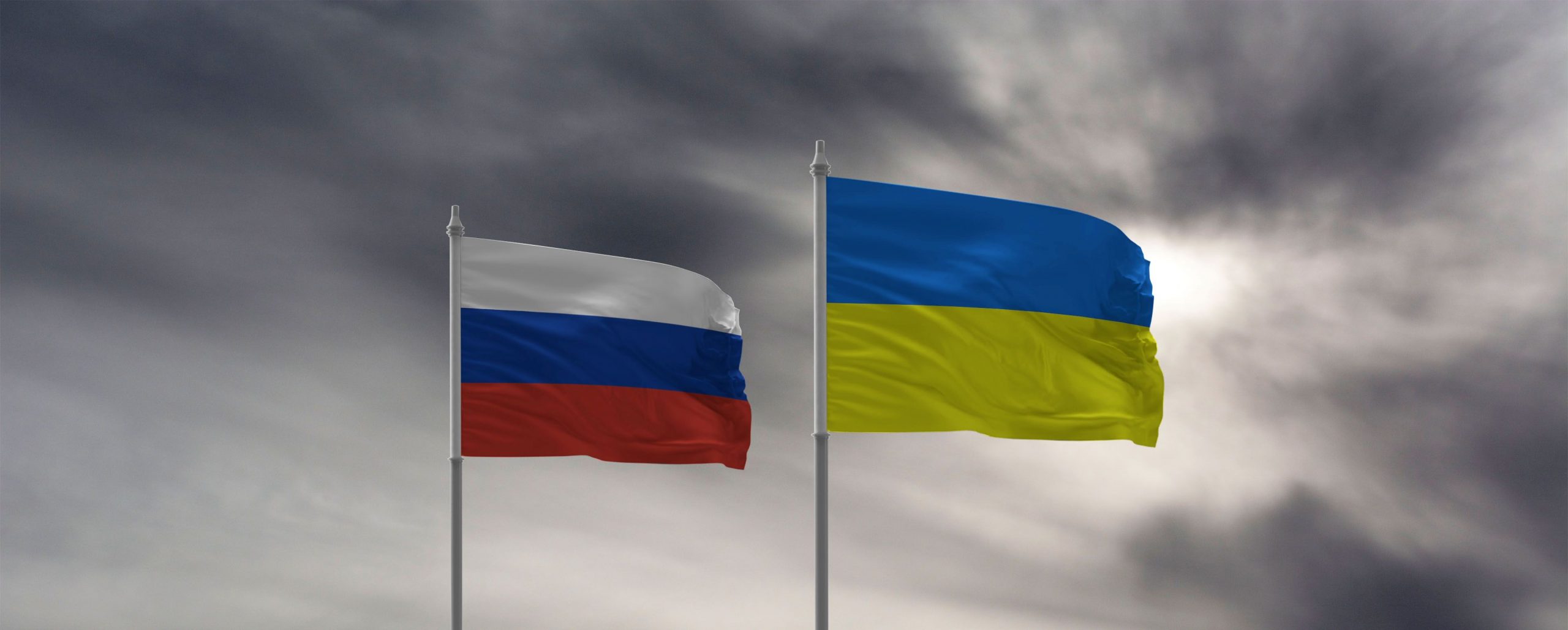Almost two years after Russia invaded Ukraine, the conflict has reached a pivot point.
Western financial help and ammunition supplies for Ukraine are running low, while public support is showing some cracks. Russia, with its larger population, has so far withstood the worst of Western sanctions and ramped up its war economy for a prolonged fight.
Russian President Vladimir Putin is now betting he can outlast the West’s support for Ukraine and make a decisive breakthrough if Russia’s economy can keep ticking over.
Here’s a snapshot of the state of the war:
Military capacity
Russia’s military budget, at over $100 billion for 2024, is the highest it has been since Soviet times, growing by more than two-thirds from last year. Its manufacturing capacity has also overcome initial shortages to help Moscow’s war machine churn out weaponry for a lengthy campaign, often at the expense of civilian production.
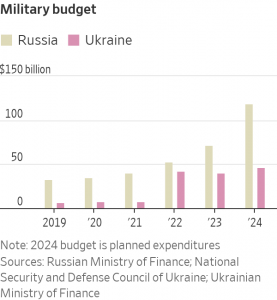
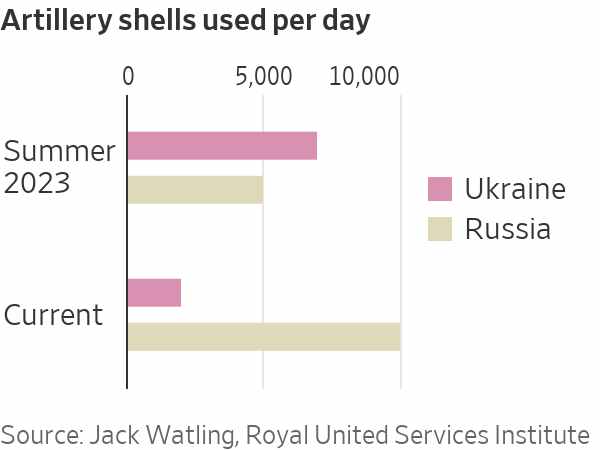
Ukraine is also investing in domestic military production capabilities, but it is no match for a much larger Russian military-industrial complex running at full steam. Kyiv could fall further behind as Western support dries up.
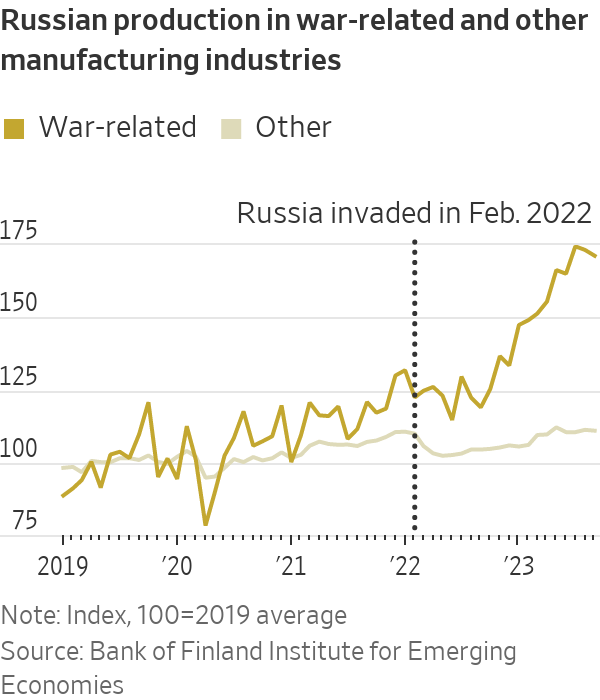
Equipment and manpower
Though U.S. estimates suggest Russia has suffered 315,000 killed or injured since the start of the war—nearly 90% of its prewar fighting force—its population was around 3½ times as large as Ukraine’s before the invasion, giving it a battlefield edge. Tens of thousands of inmates have been released from its prisons to serve the war effort, while some 300,000 reservists have also been mobilized.
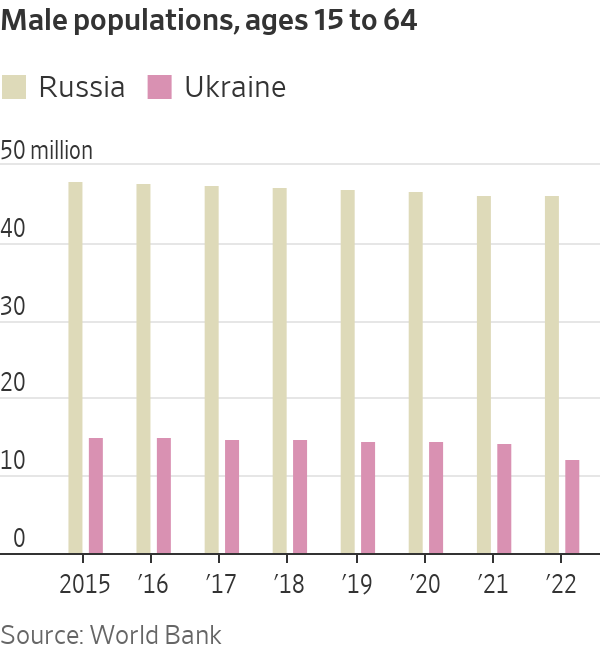
For Ukraine, a shortage of manpower is becoming a major issue, with authorities in Kyiv now scrambling to find ways to get more fighting-age men to the front lines.
Economy
Russia’s economy has ridden the wave of sanctions better than the West expected, thanks in large part to how it has redirected oil exports to China and India and evaded price caps through a shadow fleet of tankers. This lifeline has helped Russia switch to a war economy and find alternative sources for components it previously bought from the West.
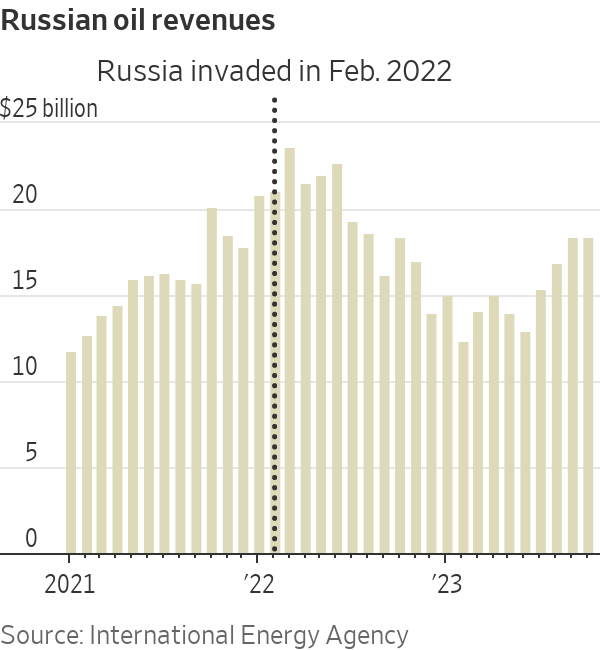
Still, the Russian economy is facing challenges. Inflation is growing, while years of low birthrates, combined with an exodus of fighting-age men to the front lines or overseas, have depleted its labor force, worsening its longer-term outlook.
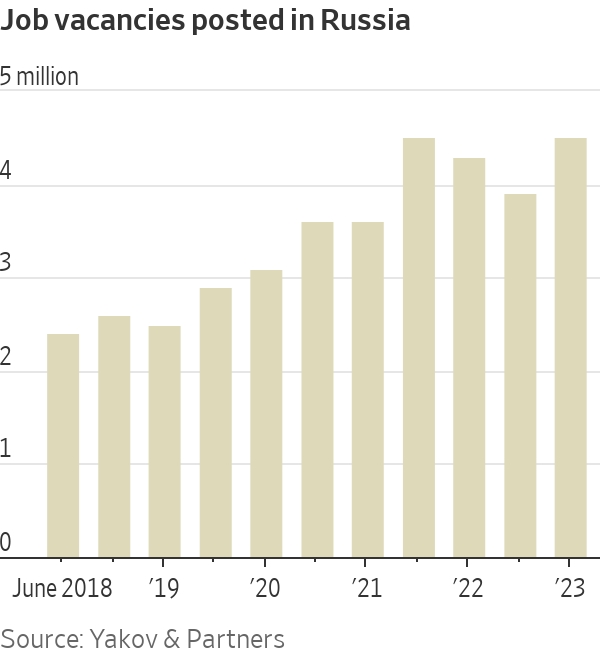
In the short term, Ukraine is in a more precarious position, with Western assistance dwindling and concerns growing over how U.S. attitudes might change after the 2024 presidential election. Without sufficient support, Ukraine may have to resort to painful spending cuts or even printing money to fill its deficit—something that would pose a grave risk to the health of its economy.
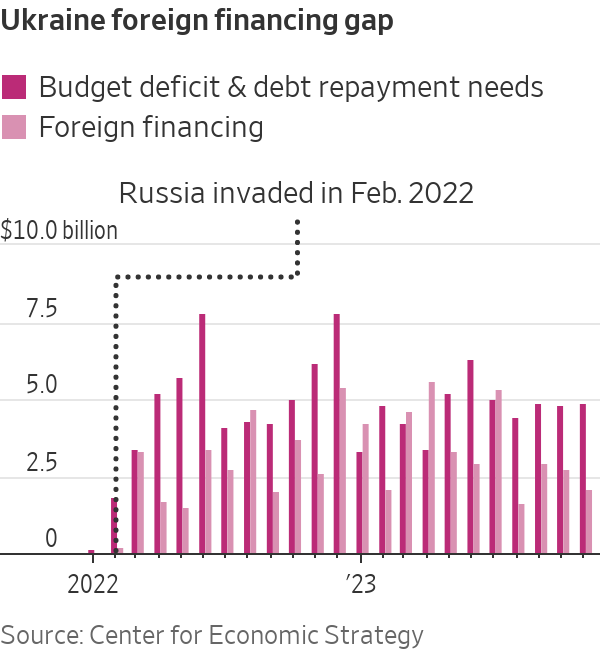
Politics
Though public support for Ukraine in the West remains high, there are growing concerns in Kyiv about the depth of U.S. commitment. A Pew Research Center survey of U.S. adults found that the percentage of people saying Washington is providing too much support rose to 31% in December from 7% at the start of the war. Support for Ukraine, though still high, also shows signs of fading in the European Union, opinion polls suggest.
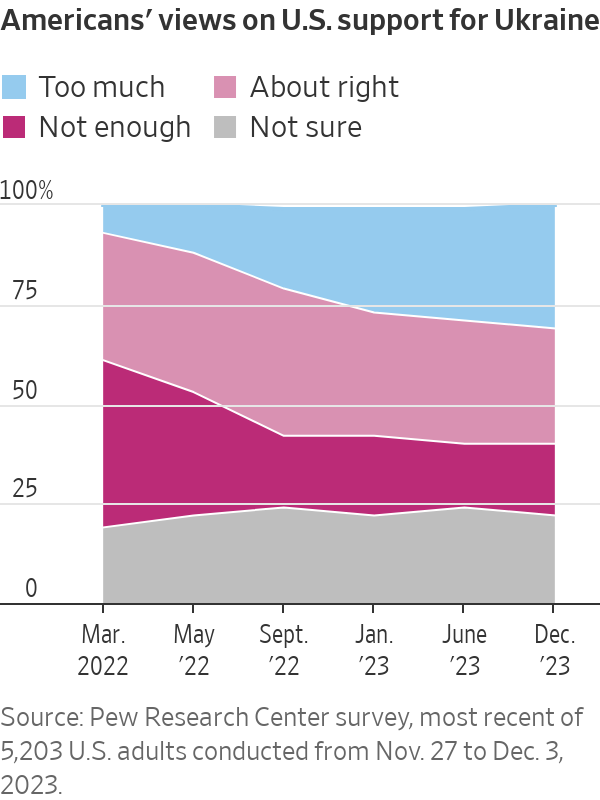
In Russia, Putin continues to command broad support and has jailed critics and silenced antiwar voices. He is expected to win another six-year term in power in March’s presidential election.
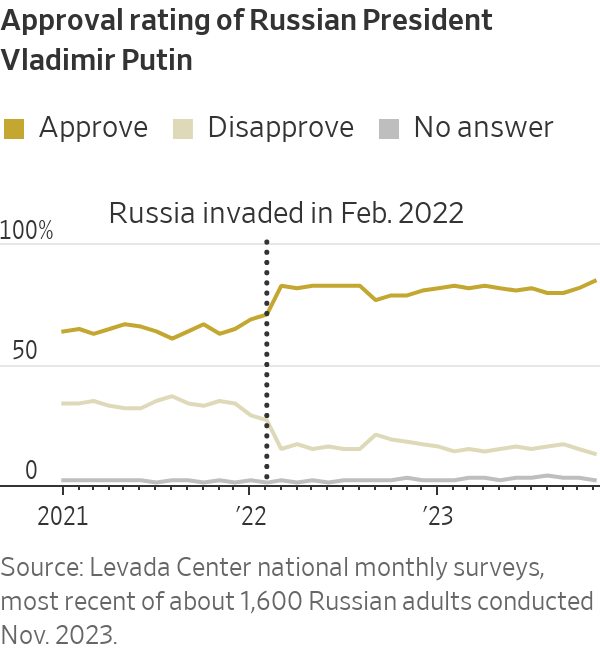
Ukrainian polls show continued opposition to territorial concessions and consistently high trust in the military, even as President Volodymyr Zelensky’s trust levels have registered some declines.
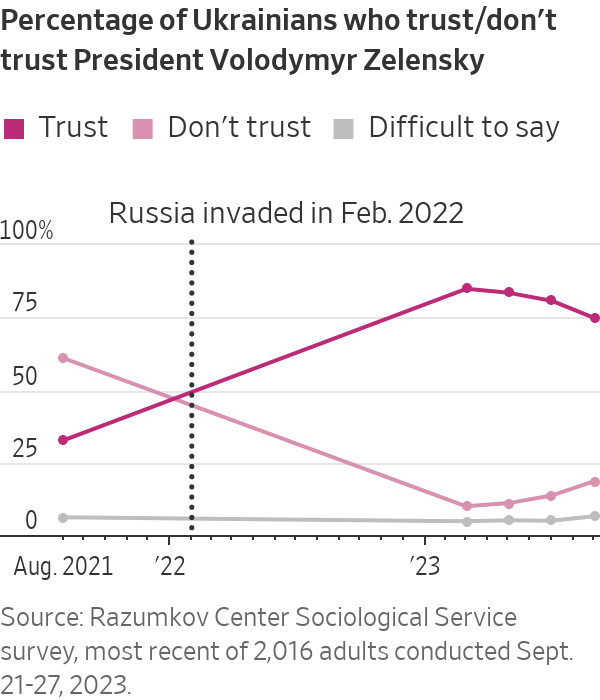
Write to Georgi Kantchev at georgi.kantchev@wsj.com, Anastasiia Malenko at anastasiia.malenko@wsj.com and Elizaveta Galkina at elizaveta.galkina@wsj.com
